Description
The instruction for medical use
medicine
РОКСЕРА®
the Trade name
of POKCEPA ®
the International unlicensed
name Rosuvastatin Dosage Form
of the Tablet, film coated, 5 mg, 10 mg, 20 mg and 40 mg
Structure
One tablet contains
active substance-rosuvastatin of calcium of 5.21 mg, 10.42 mg, 20.83 mg, or 41.66 mg are equivalent rosuvastatin of 5 mg, 10 mg, 20 mg and 40 mg respectively,
excipients: cellulose microcrystalline, lactose anhydrous, krospovidon, silicon dioxide colloidal anhydrous, magnesium stearate,
film cover: main copolymer of bottled methacrylate, macrogoal 6000, titan E171 dioxide, lactoses monohydrate.
The description
of the Tablet of round shape, with slightly biconvex surface, film coated white color, with marking 5 on one party and with a facet (for a dosage of 5 mg).
Tablets of round shape, with slightly biconvex surface, film coated white color, with marking 10 on one party and with a facet (for a dosage of 10 mg).
Tablets of round shape, film coated white color, with a facet (for a dosage of 20 mg).
Tablets of a capsulovidny form, with a biconvex surface, film coated white color (for a dosage of 40 mg).
Pharmacotherapeutic group
Hypolipidemic drugs. Reductase HMG SoA inhibitors.
The code of automatic telephone exchange C10AA07
the Pharmacological
Pharmacokinetics Absorption Maximum Concentration properties (With max) rosuvastatin in blood plasma is reached approximately in 5 hours (Tmax) after oral administration. The absolute bioavailability is about 20%.
Distribution
Rozuvastatin is taken mainly a liver which is the main place of synthesis of cholesterol (XC) and metabolism of lipoproteins of the low density (LDL). The volume of distribution of rosuvastatin is about 134 l. About 90% of rosuvastatin contact proteins of blood plasma, generally albumine.
Metabolism
Rosuvastatin is exposed to limited metabolism (about 10%). The main isoenzyme participating in rosuvastatin metabolism is CYP2C9. The main allocated metabolites – N-desmetil and lactonic metabolites. N-desmetilovy a metabolite for about 50% is less active, than rosuvastatin, and the lactonic form is clinically inactive. Rosuvastatin causes about 90% of the inhibiting activity circulating hydroxymethylglutaryl – coenzyme A (HMG-CoA) of reductase.
Removal
About 90% of a dose of rosuvastatin is removed in not changed view with excrements (including the absorbed and not absorbed rosuvastatin). The rest is removed with urine. About 5% of rosuvastatin are removed with urine in not changed look. Plasma elimination half-life makes about 20 hours. Elimination half-life (T1/2) does not change at increase in a dose of drug. The average geometrical plasma clearance is about 50 liters an hour. System influence of rosuvastatin increases in proportion to a dose. Pharmacokinetic parameters do not change at multiple dose of drug.
The renal failure
the Slight or moderate disease of kidneys does not influence plasma concentration of rosuvastatin or N-desmetilovogo of a metabolite. At persons with severe damages of kidneys (clearance of creatinine less than 30 ml/min.) plasma concentration of rosuvastatin increase by 3 times, and concentration of N-desmetilovogo of a metabolite – by 9 times in comparison with patients with healthy kidneys. Equilibrium plasma concentration of rosuvastatin at the patients who are on a hemodialysis are about 50% higher, than at patients with healthy kidneys.
A liver failure
At patients with 7 or less points on a scale of Chayld-Pyyu signs of increase in system influence of rosuvastatin are not revealed. At patients with a liver failure which degree made 8 and 9 on a scale of Chayld-Pyyu the increase in T1/2, at least, is noted twice. Experience of use of drug for patients with point higher than 9 on a scale of Chayld-Pyyu is absent.
Pharmacodynamics
РОКСЕРА® – lipidosnizhayushchy drug, is selection, a competitive inhibitor of HMG-CoA of reductase, the enzyme turning Z-hydroksi-3-metilglutarilkoenzim And in mevalonat, the predecessor of cholesterol. The main scene of action of rosuvastatin is the liver, a target organ of hypocholesteric therapy.
РОКСЕРА® increases number of hepatic receptors of lipoproteins of the low density (LDL) by surfaces of cells, increasing capture and catabolism of LDL that in turn leads to inhibition of synthesis of lipoproteins of very low density (LPONP), reducing thereby total amount of LDL and LPONP.
РОКСЕРА® reduces the increased content of cholesterol-LDL, general cholesterol, triglycerides (TG), increases the content of cholesterol of lipoproteins of the high density (HS-LPVP). It also reduces apolipoprotein B content (ApoV), HS-neLPVP, HS-LPONP, TG-LPONP also increases the level of A-I apolipoprotein (ApoA-I).
РОКСЕРА® reduces a ratio of HS-LPNP/HS-LPVP, the general HS/HS-LPVP and HS – not LPVP / HS-LPVP and a ratio of ApoV/ApoA-I.
The therapeutic effect is noticeable within the first week after the beginning of therapy, in 2 weeks of treatment reaches 90% of the greatest possible effect. The maximum therapeutic effect is usually reached by 4th week and maintained at further reception.
The drug ROKSERA® is effective at adult patients with a hypercholesterolemia with or without gipertriglitseridemiya, regardless of race, a floor or age, including at special groups of patients (with diabetes or with a family hypercholesterolemia). The drug ROKSERA® is effective at treatment of most of patients with a hypercholesterolemia of IIa and IIb of types (average HS-LNP initial level about 4.8 mmol/l).
At use of the drug ROKSERA® in doses from 20 to 40 mg at patients with a homozygous family hypercholesterolemia, average decrease in HS-LPVP in the general sample was 22%. РОКСЕРА® also shows additive effect concerning decrease in level of triglycerides, at combination with fenofibraty and concerning increase in HS-LPVP at combination with niacin.
Rosuvastatin in a dose of 40 mg has to be appointed only to patients with a heavy hypercholesterolemia and high risk of cardiovascular pathology.
Indications
– primary hypercholesterolemia (the IIa type, including a family heterozygous hypercholesterolemia) or the mixed dislipidemiya (IIb type) as addition to a diet when the diet and other non-drug methods of treatment (for example, physical exercises, decrease in body weight) are insufficient
– a family homozygous hypercholesterolemia as addition to a diet and other lipidsnizhayushchy therapy (for example, LPNP-aferez), or in cases when similar therapy is not suitable the patient
– as addition to a diet for delay of progressing of atherosclerosis at adult patients as a part of therapy for decrease in levels of the LPNP general cholesterol (OHS) and XC to target levels
– prevention of cardiovascular complications at adult patients with the increased risk of developing an atherosclerotic cardiovascular disease as auxiliary therapy.
The route of administration and doses
before therapy by drug the patient has to be on a standard diet with the lowered content of cholesterol and continue to adhere to this diet during treatment. The dose of drug is established individually, depending on the purposes of therapy, the response of the patient to treatment. The recommended initial daily dose makes from 5 mg to 10 mg and is accepted once a day. The dose is identical as to the patients for the first time accepting statines, and passing from therapy with other HMG inhibitor – reductase CoA. When choosing a starting dose it is necessary to consider the initial individual level of cholesterol and the existing cardiovascular risk and also potential risk of development of undesirable reactions.
If necessary the dose can be increased in 4 weeks. Considering the increasing frequency of messages about adverse reactions at reception of a dose of 40 mg in comparison with lower doses, increase in a daily dose up to 30 mg or 40 mg has to be considered only for patients with a heavy lipidemia and high cardiovascular risk (in particular, at a family hypercholesterolemia) at which it is not possible to reach target levels of lipids at reception of lower doses and which will be under observation. The special attention to patients is necessary at the beginning of reception of doses by them in 40 mg or 30 mg.
Increase in a dose up to 40 mg is possible only under observation of the doctor. Purpose of a dose of 40 mg is not recommended to the patients who were earlier not taking the drug. After 2-week therapy and/or at increase in dose РОКСЕРЫ® the control of indicators of lipidic exchange is necessary (if necessary – dose adjustment).
РОКСЕРА® can be accepted at any time, irrespective of food.
Use at elderly
to Patients is aged more senior than 70 years it is recommended to begin administration of drug with a dose of 5 mg
Dosing at patients with a renal failure
At patients with a renal failure easy or moderate severity dose adjustment is not required, the recommended initial dose of drug of 5 mg. At patients with moderate renal failures (clearance of creatinine less than 60 ml/min.) – use of drug in a dosage of 40 mg is contraindicated. At patients with the profound renal failure (clearance of creatinine less than 30 ml/min.) – use
of the drug ROKSERA® Dosing for patients with damages of a liver
At patients with 7 points and/or less on a scale of Chayld-Pyyu is contraindicated, dose adjustment is not required. Experience of use of drug for patients with point higher than 9 on a scale of Chayld-Pyyu is absent.
The drug ROKSERA® is contraindicated to patients with liver diseases in an active phase.
Race
increase in system concentration of rosuvastatin among Japanese and Chinese Is noted. The recommended initial dose for patients of Asian race makes 5 mg. Prescribing of drug in a dose of 30 mg or 40 mg is contraindicated to patients of Asian race.
Dosing at patients with predisposition to a myopathy
the Recommended initial dose for patients with the factors contributing to development of a myopathy makes 5 mg. Doses of 40 mg and 30 mg are contraindicated to such patients.
Side effects
Often (³1/100 to
– a headache, dizziness
– nausea, an abdominal pain, constipations
– myalgia
– an asthenia
– diabetes (patients with level have a glucose in blood and on an empty stomach
5.6 – 6.9 mmol/l)
– a proteinuria (mainly tubular origin. To treason –
a niya of amount of protein in urine (from absence or trace quantities to
++ or more) are observed at less than 1% of the patients receiving
10 – 20 mg of drug and at about 3% of the patients receiving 40 mg
of drug. Insignificant increase in amount of protein in urine otmecha-
an elk at reception of a dose of 20 mg. (In most cases the proteinuria
decreases or disappears in the course of therapy and
the niya sharp or progressing of the existing disease of kidneys does not mean vozniknove-).
Infrequently (³1/1000 to
– an itching, rash, urticaria
Seldom (³1/10,000 to
– hypersensitivity reactions, including a Quincke’s
disease
– pancreatitis
– a myopathy and a rhabdomyolysis (at use of rosuvastatin in all dozi-
rovka and, in particular at reception of the doses exceeding 20 mg, together –
an elk about impacts on the musculoskeletal system, such as myalgia,
myopathy, in rare instances rhabdomyolysis. Dose-dependent increase
in level of a kreatinfosfokinaza (KFK) is observed at insignificant number of the patients accepting rosuvastatin. In most cases it was insignificant, asymptomatic and temporary. In a case povyshe-
a KFK level niya (more than by 5 times in comparison with the upper bound
of norm) therapy has to be suspended)
– increase in level of hepatic transaminases (at use rozuva-
statine dose-dependent increase in activity of “hepatic” transaminases at insignificant number of patients is observed. In most cases it was insignificant, asymptomatic and temporary)
Is very rare (
-jaundice, hepatitis
– an arthralgia
– polyneuropathy, decrease in memory (memory loss)
– a depression, sleep disorders
– a hamaturia
– sexual dysfunction
Frequency is unknown
– diarrhea
– Stephens-Johnson’s syndrome
Noted frequency of development of a rhabdomyolysis, serious events from the kidneys or a liver (consisting, mainly, in increase in “hepatic” transaminases) is higher than 40 mg at reception of a dose.
Contraindications
For doses of 5 mg, 10 mg and 20 mg
– raised by sensitivity to rosuvastatin or any of drug components
– liver diseases in an active phase, permanent increase in serumal
activity of transaminases and any increase in activity of transaminases in
blood serum more than by 3 times in comparison with the upper bound
of norm
– the profound renal failures (clearance of creatinine
less than 30 ml/min.)
– a myopathy
– a concomitant use of cyclosporine
– predisposition to development of miotoksichesky complications
– pregnancies and the period of a lactation
– at women of childbearing age in the absence of adequate methods a game –
tratseption.
For doses it is higher than 20 mg and up to 40 mg are in addition contraindicated:
– the myopathy or factors contributing to development the myopathy / slave –
a domioliza, hereditary myopathies in the personal or family anamnesis
– moderate renal failures (clearance of creatinine
– a hypothyroidism
– anamnestic instructions on the miotoksichesky phenomena at intake of other HMG inhibitors – CoA of reductase or fibrat
– alcohol addiction
– situations at which plasma concentration
of drug
– patients of Asian race
– a concomitant use of fibrat can increase.
Medicinal interactions
Cyclosporine
At simultaneous use of rosuvastatin and cyclosporine the AUC value (the area under a curve “concentration – time”) rosuvastatin, on average, increases by 7 times. Combined use does not affect plasma concentration of cyclosporine.
Antagonists of vitamin K
As well as in case of other HMG inhibitors – reductase CoA, the beginning of therapy by the drug ROKSERA® or increase in a dose of drug at the patients receiving at the same time antagonists of vitamin K (for example, warfarin), can lead to increase in a prothrombin time.
Ezetimib
the Concomitant use of rosuvastatin and an ezetimib is not followed by change of AUC or Cmax of both drugs. However it is impossible to exclude pharmakodinamichesky interaction between rosuvastatin and ezetimiby, shown undesirable reactions.
Gemfibrozil and other lipidsnizhayushchy means
leads Combined use of rosuvastatin and a gemfibrozil to increase twice in Cmax and AUC rosuvastatin. Based on data on specific interaction, significant interaction from fenofibrata, perhaps pharmakodinamichesky interaction is not expected pharmacokinetically. Gemfibrozil, fenofibrat, other fibrata and lipidsnizhayushchy doses of Niacinum (niacin) (doses big or equivalent 1 g/day) increased risk of emergence of a myopathy at simultaneous use with HMG inhibitors – reductase CoA, it is possible because they can cause a myopathy and when using as monotherapy. Doses of 40 mg and 30 mg are contraindicated for combined use with gemfibrozily and other lipidsnizhayushchy means. At such patients the therapy also has to begin with a dose of 5 mg.
Inhibitors of proteases
Though the exact mechanism of interaction is unknown, the concomitant use of inhibitors of proteases can is expressed to increase system concentration of rosuvastatin. It was reported about increase in equilibrium AUC and Cmax of rosuvastatin, respectively, in 2 and 5 times at a concomitant use 20 mg of rosuvastatin and the combined product from two inhibitors of proteases (400 mg of a lopinavir / 100 mg of a ritonavir). Thus, use of rosuvastatin for the HIV-positive patients receiving inhibitors of proteases is not recommended.
Simultaneous use of rosuvastatin and suspensions of the antacids containing aluminum and magnesium hydroxide leads antacids to decrease in plasma concentration of rosuvastatin approximately for 50%. This effect is significant more weakly if antacids are applied in 2 hours after administration of drug РОКСЕРА®. The clinical value of similar interaction was not studied.
Erythromycin
leads Simultaneous use of rosuvastatin and erythromycin to reduction of AUC rosuvastatin by 20% and Cmax of rosuvastatin by 30%. Similar interaction can result from strengthening of motility of the intestines caused by intake of erythromycin.
Oral contraceptives / the replacement hormonal therapy (RHT)
increases Simultaneous use of rosuvastatin and oral contraceptives AUC ethinylestradiol and AUC Norgestrelum by 26% and 34%, respectively. Such increase in plasma concentration has to be considered at selection of a dose of oral contraceptives.
Digoxin
according to special researches should not be expected clinically significant interaction of rosuvastatin with digoxin.
P450 cytochrome enzymes
Results of the researches in Vivo and in vitro showed that rosuvastatin is not either inhibitor, or the inductor of enzymes of P450 cytochrome. Besides, rosuvastatin is weak substrate for these enzymes. Clinically significant interaction between rosuvastatin and flukonazoly (CYP2C9 and CYP3A4 inhibitor) and ketokonazoly was not noted (CYP2A6 CYP3A4 inhibitor). Combined use of rosuvastatin and an itrakonazol (CYP3A4 inhibitor) increases AUC rosuvastatin by 28%. This small increase was regarded as clinically insignificant. Thus, the interaction connected with metabolism by P450 cytochrome is not expected.
Special instructions
Influence on kidneys
At the patients receiving high doses of rosuvastatin (in particular 40 mg), the tubular proteinuria was observed, and in most cases was periodic or short-term. At the patients taking the drug in a dose of 30 or 40 mg during treatment it is recommended to control indicators of function of kidneys (at least time in 3 months).
Influence on skeletal muscles
At use of rosuvastatin in all dosages and, in particular at reception of the doses exceeding 20 mg was reported about the following impacts on the musculoskeletal system: myalgia, a myopathy, in rare instances – a rhabdomyolysis. Very exceptional cases of a rhabdomyolysis at a concomitant use of HMG inhibitors are celebrated – CoA of reductase and an ezetimib. It is impossible to exclude pharmakodinamichesky interaction therefore the rosuvastatin combination with ezetimiby has to be applied with care.
As well as in case of other HMG inhibitors – reductase CoA, rhabdomyolysis frequency at post-marketing use of drug in a dose of 40 mg is observed more often.
Kreatinfosfokinaza (KFK) cannot be defined after intensive physical activities and in the presence of other possible reasons of increase in the KFK level, it can lead to incorrect interpretation of the received results. If the KFK initial level is significantly increased (5 times higher, than the upper bound of norm), in 5 – 7 days it is necessary to take repeated measurement. It is impossible to begin therapy if the repeated test confirms the KFK initial level (above, more than by 5 times in comparison with the upper bound of norm).
Similar to other HMG CoA inhibitors of reductase, the drug ROKSERA® has to be appointed with care to patients with the available risk factors of a myopathy/rhabdomyolysis. Treat such factors:
– damages of kidneys
– a hypothyroidism
– hereditary myopathies in the personal or family anamnesis
– anamnestic instructions on the miotoksichesky phenomena at intake of other
HMG CoA inhibitors of reductase or fibrat
– alcohol addiction
– age are more senior than 65 years
– situations at which plasma concentration
of drug
– a concomitant use of fibrat can increase.
At such patients it is necessary to estimate risk and possible advantage of therapy. And also it is recommended to carry out clinical monitoring. If the KFK initial level is higher more, than by 5 times, in comparison with the upper bound of norm, therapy by drug cannot be begun.
During therapy by drug it is necessary to inform the patient on need to immediately report to the doctor about cases of unexpected appearance of muscular pains, muscle weakness or spasms, especially in combination with an indisposition and fever. At such patients it is necessary to determine the KFK level. Therapy has to be stopped if the KFK level is considerably increased (more than by 5 times in comparison with the upper bound of norm) or if symptoms from muscles are pronounced and cause daily discomfort (even if the KFK level is 5 times less in comparison with the upper bound of norm). If symptoms disappear, and the KFK level returns to norm, it is necessary to consider a question of repeated prescribing of the drug ROKSERA® or other HMG CoA inhibitors of reductase in smaller doses at careful observation of the patient. Routine control of the KFK level in the absence of symptoms is not reasonable.
In clinical trials signs of increase in impact on skeletal muscles at intake of rosuvastatin and the accompanying therapy are noted. However it was reported about increase in number of cases of a miositis and a myopathy at the patients accepting other HMG CoA inhibitors of reductase in combination with derivatives of fibrinous acid (for example, gemfibrozit), by cyclosporine, niacin, azolovy antifungal means, inhibitors of proteases and makrolidny antibiotics. Thus, it is not recommended to appoint at the same time РОКСЕРА® and gemfibrozit. Advantages of further change of levels of lipids at the combined use РОКСЕРА® from fibrata or Niacinum (niacin) have to be carefully weighed taking into account possible risk. Doses of 40 mg and 30 mg are contraindicated for combination therapy from fibrata. ® the patients who are in a state who can lead to a myopathy or are able, contributing to development of a renal failure owing to a rhabdomyolysis (for example, sepsis, hypotension, extensive surgical interventions, injuries, heavy metabolic, endocrine and electrolytic disturbances, or uncontrollable spasms) should not appoint ROKSERU.
Influence on a liver
As well as in case of other HMG CoA inhibitors of reductase, the drug ROKSERA® has to be used with care at the patients who are taking excess amounts of alcohol and/or having in the anamnesis of a disease of a liver. Experience of use of drug for patients with point higher than 9 on a scale of Chayld-Pyyu is absent.
It is recommended to carry out definition of indicators of function of a liver prior to therapy and in 3 months after the beginning of therapy. Administration of drug РОКСЕРА® it is necessary to stop or reduce a drug dose if the level of activity of transaminases in blood serum by 3 times exceeds the upper bound of norm or permanent increase is noted.
At patients with a hypercholesterolemia owing to a hypothyroidism or a nephrotic syndrome prior to the ROKSERA® drug treatment the therapy of basic diseases has to be carried out.
The race
System concentration of rosuvastatin at patients of Asian race is higher, in comparison with Europeans.
Information on
Tablet ROKSERA® excipients, film coated, contain lactose. Patients with rare hereditary problems of intolerance of a galactose, deficiency of Lappa lactase or with a syndrome of the broken absorption of glucose galactose should not take this drug.
The feature of influence of medicine on ability to run the vehicle or potentially dangerous mechanisms
was not conducted researches on studying influence of rosuvastatin on ability to run the vehicle and potentially dangerous mechanisms. During the driving or work with mechanisms it is necessary to consider that during therapy there can be dizziness.
Simtoma’s overdose: expressiveness of symptoms of side effects.
Treatment: symptomatic, the supporting actions are necessary. Specific treatment does not exist. Control of function of a liver and the KFK level is necessary. The hemodialysis is ineffective.
Form of release and packing
of the Tablet, film coated, 5 mg, 10 mg, 20 mg and 40 mg.
On 7 tablets (for a dosage of 40 mg) or on 10 tablets (for dosages of 5 mg, 10 mg, 20 mg and 40 mg) or on 14 tablets (for dosages of 5 mg, 10 mg and 20 mg) place in blister strip packaging from the laminated OPA/Al/PVC and aluminum foil.
On 3, 9 blister strip packagings (on 10 tablets) or on 2, 4, 12 blister strip packagings (on 7 tablets) or 1, 2, 6 blister strip packagings (on 14 tablets) together with the instruction for medical use in the state and Russian languages place in a pack from cardboard.
Storage conditions
In the place protected from light at a temperature not over 30 ºС. To store in original packing.
To store out of children’s reach!
2 years
not to apply a period of storage after a period of storage.
Prescription status
According to the prescription
the Producer
of KRK, of. The place is new, Slovenia
Shmaryeshka 6, 8501 the place, Slovenia
the Name and the country of the owner of the registration certificate
of KRK, of Is new, the Place, Slovenia
the Address of the organization accepting in the territory of the Republic of Kazakhstan claims from consumers on quality of products (goods)
Representation “KRKA, tovarna zdravil, d.d., Novo mesto” in PK
PK, 050059, Almaty, Al-Farabi Ave., 5/1, section 3 A, the 4th floor Is new.
ph. 8 (727) 311-08-09
fax 8 (727) 311-08-12
www.krka.si
to Develop
Additional information
| Ingredient |
|---|





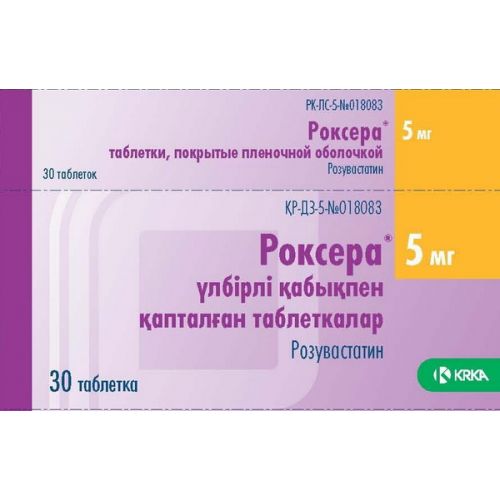
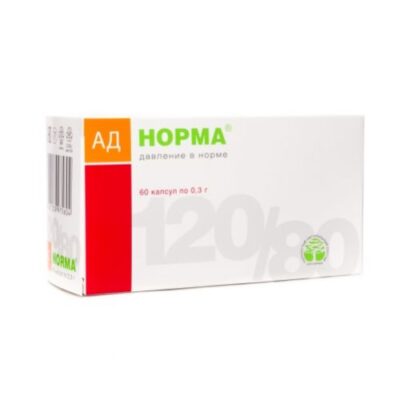
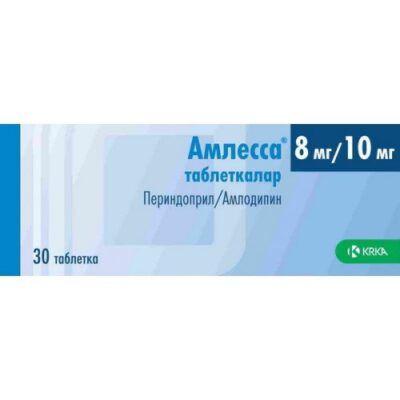
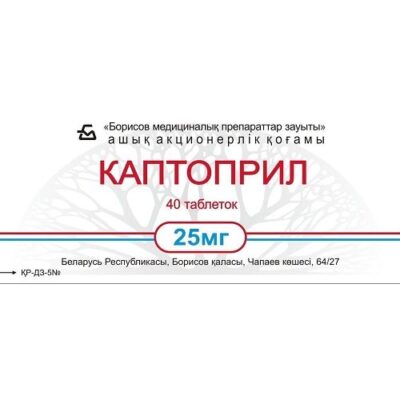
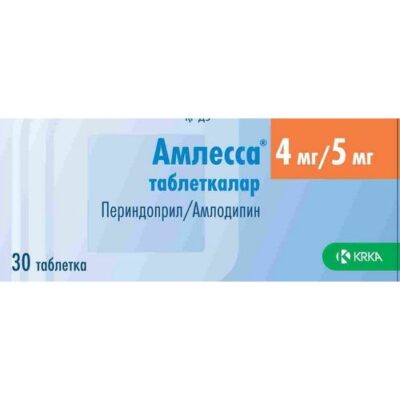
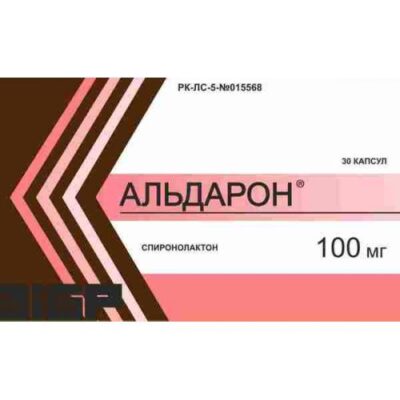
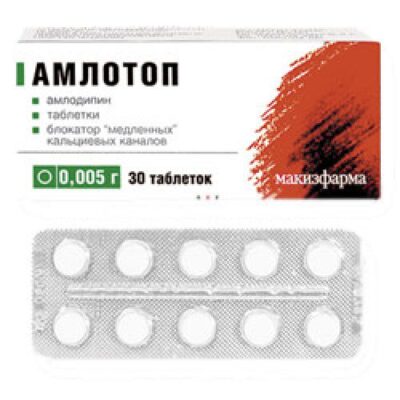
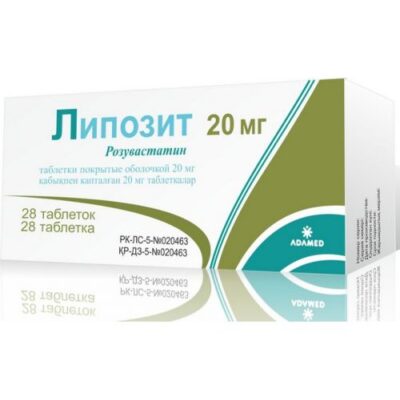
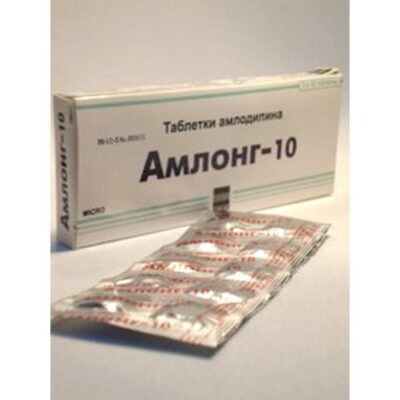
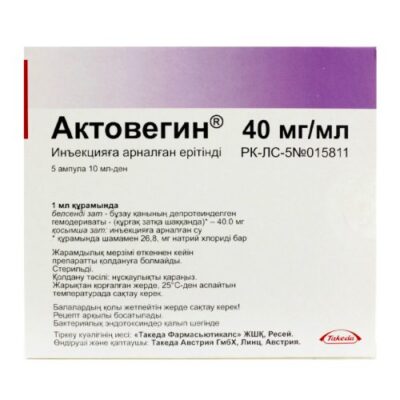
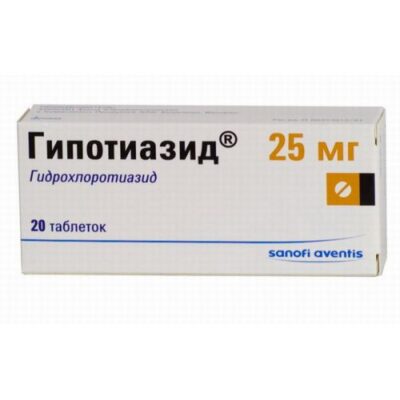






Reviews
There are no reviews yet.